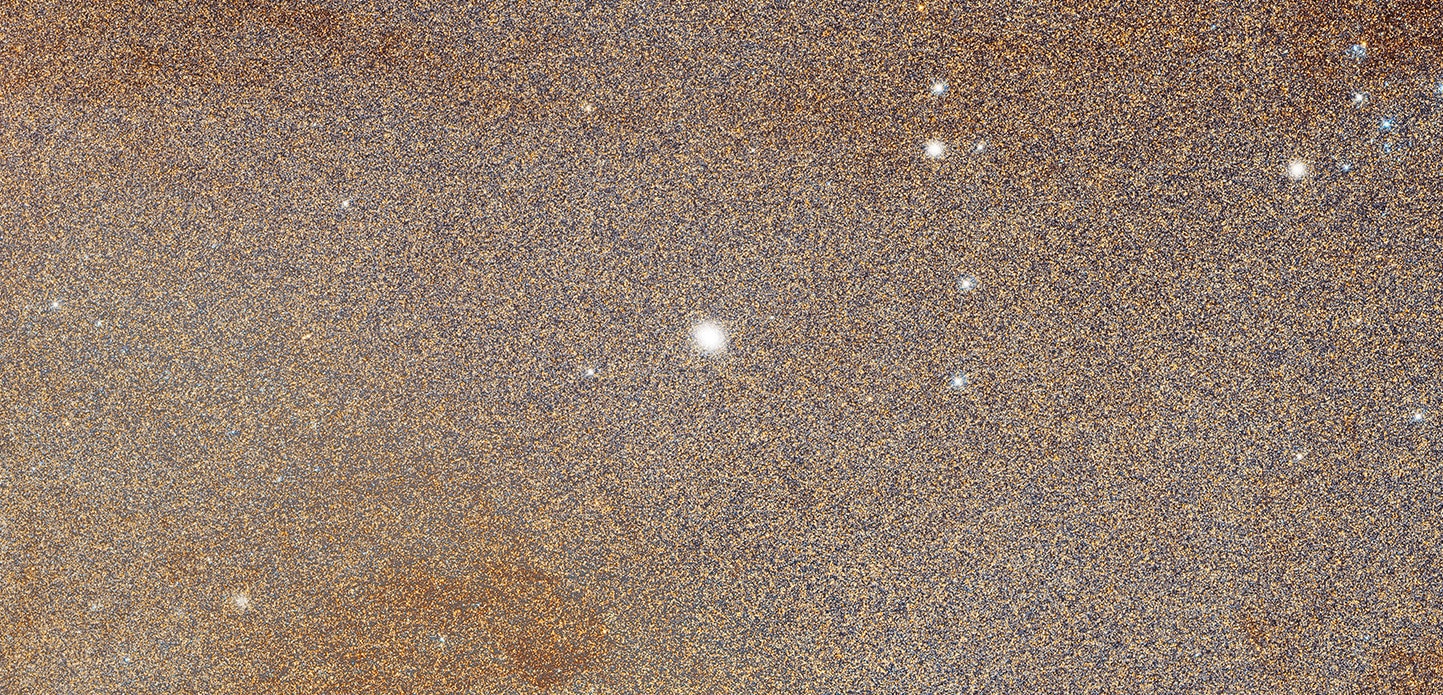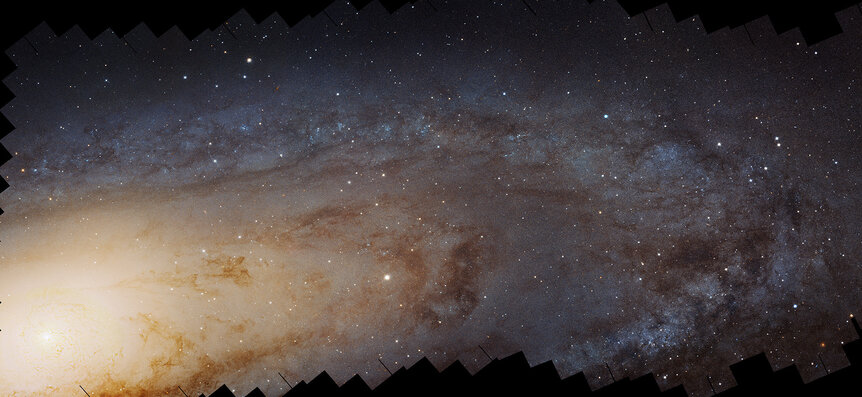Create a free profile to get unlimited access to exclusive videos, sweepstakes, and more!
Andromeda

Yesterday, I posted an amazing Hubble Space Telescope picture. I don’t think it’s too soon to post another shot from Hubble … and I think you’ll agree when you see it, especially after you get an understanding of what you’re seeing.
First, the eye candy: The magnificent Andromeda galaxy, as seen by Hubble.
It’s almost impossible to overstate how amazing this image is. Andromeda is the nearest big galaxy to our own, our sister galaxy in many ways; a spiral behemoth, though bigger and more massive than the Milky Way.
This image from Hubble shows one half of it, and is composed of more than 400 separate images taken in six different filters. The full resolution image is a staggering 1.5 billion pixels in size—1,500 megapixels—and took 394 hours of Hubble’s time to observe … more than 16 solid days. The image I have here has been shrunk down to 1,440 pixels wide, so it’s massively compressed. The highest resolution image available from the folks at Hubble is 17,384 x 5,558 pixels, and is a mere 100 megapixels. Mind you, it’s a 200 Mb file, so download it with care.
The Andromeda galaxy is about 2.5 million light-years away—practically in our lap, in cosmic terms—and about 200,000 light-years in diameter.* In this Hubble image we see a stretch 60,000 or so light-years long. The center of the galaxy, on the left, appears far more reddish than the outskirts, which look blue. Blue stars are massive, luminous, and don’t live long, exploding as supernovae after a few million years. Once stars stop being born, all the blue stars explode, leaving behind the redder ones. The center of Andromeda hasn’t seen star birth in eons, and that’s why it appears red.
Huge lanes of dust choke the disk of the galaxy; created when stars are born and when they die, dust is actually made of complex carbon molecules and is essentially soot. It absorbs visible light, blocking the stars behind it, and tends to follow the spiral patterns of galaxies like Andromeda. You can see it all across the image.
In the outer arms you can also see clumps of blue. These are where stars are actively being born. There are lots and lots of red stars being created there, but they’re faint and can’t compete with the massive blue superstars.
When I first saw this image, I was seriously impressed by its size. Andromeda is huge, as wide as four or five full Moons across the sky (a viral image from 2014 makes that pretty clear). But it looked odd to me, speckly, like a digital image taken in low light conditions, where noisy pixels make the image look grainy. I knew that couldn’t be the case; Andromeda is bright, and the exposure times from Hubble would assure a high-quality image.
I had a sneaking suspicion what I was seeing, but I had to download the high-res image to be sure.
Those weren’t noisy pixels. Those were freaking stars.
Here’s a section of the high-res image, shown at full resolution. Look at it! It’s 1,440 x 602 pixels, and I have no clue how many individual stars are in it. Tens of thousands, certainly, probably hundreds of thousands. And it’s just a subsection of the original image!
The entire full-res image shows something like 100 million stars. A hundred million! And you can see them, pick them out as individuals, due to Hubble’s extremely sharp vision.
To give you an idea of what you’re seeing, look at the top full image. See that bright star just below center? That’s probably a star in our own galaxy, seen in the foreground. The subsection I put up is from just to the left of that star; the brightest star in the subsection is to the left and a little above the bright star in the big picture.
And it’s not even a star. As you can see in the second image, it’s actually a globular cluster, a tightly-bound collection of tens or hundreds of thousands of stars packed into a ball a few light-years across. The Milky Way has more than 150 such globulars orbiting it; Andromeda has more than 500. The full-res image is littered with them.
It’s incredible. This is an entirely different galaxy, and not only can we see individual stars in it, but hundreds of millions of them. A century ago, telescopes finally got big and good enough to see stars in Andromeda. Observing some of them carefully allowed Edwin Hubble and his team to measure the distance to Andromeda, giving us a scale to the size of the Universe for the first time.
And here we are, decades later, looking at them effortlessly on our computers, thanks to a telescope bearing his name and the hard work of a lot of folks putting this image together.
Like the image of the Pillars of Creation, the science in this huge mosaic is bountiful. Using six filters means stars can be categorized by color (which in turn tells us much about their mass, age, temperature, and more), and a lot of the dynamics and evolution of Andromeda will be discernible. Data like this will be pored over for years.
And that’s of course the reason it was taken. You don’t use up more than two weeks of Hubble time on a whim. Now that the observatory is aging, though, riskier and longer-term projects are more likely to be attempted. I’m glad someone thought to take this peek at our neighbor.
Correction, Jan. 8, 2015: This post originally misstated that the diameter of the Andromeda galaxy is 100,000 light-years. It’s 200,000 light-years.
















